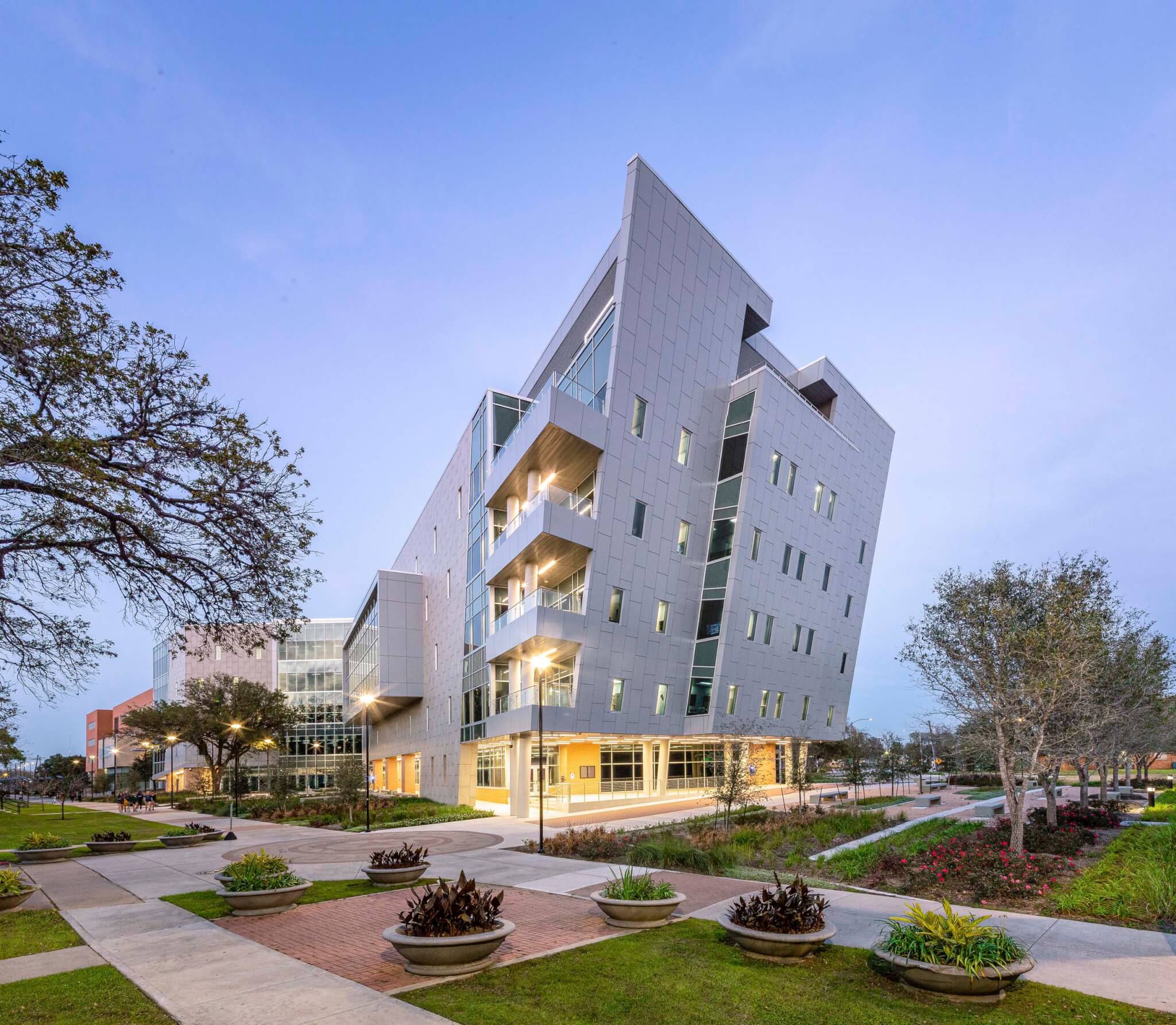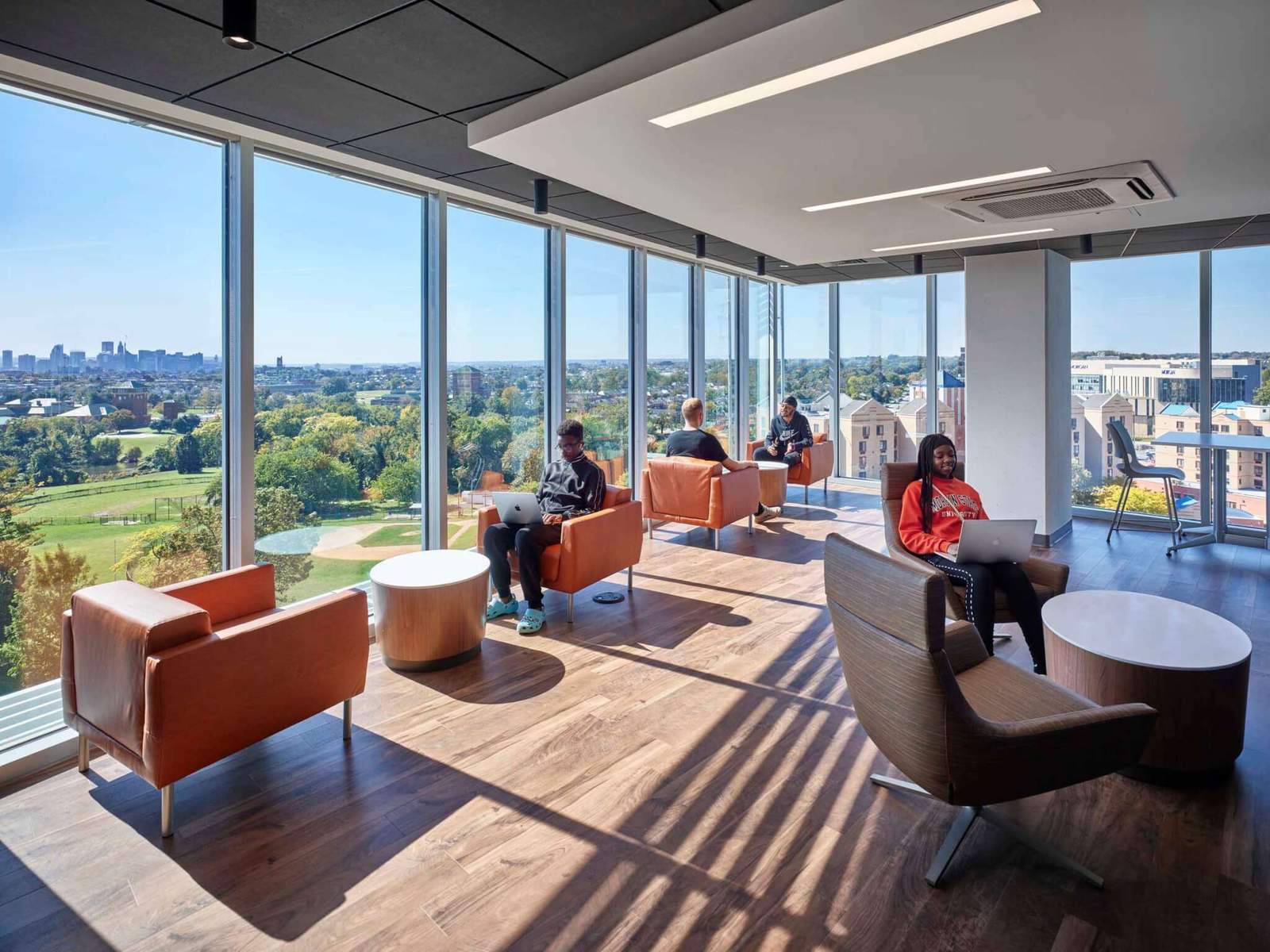Historically Black colleges and universities (HBCUs) play a vital role in the education of Black Americans. These important institutions often began as land-grant institutions mandated by the federal government in areas with long-standing racist policies that did not allow the admission of Black students to other universities. (The first was Cheyney University, established in 1837.) As a result, HBCUs, largely concentrated in the American South and Midwest, evolved to become educational havens in otherwise hostile environments.
Moody Nolan has developed impressive expertise in serving HBCU clients. Since 1985, the architecture office has completed more than 70 projects on 32 campuses across the country. Its commitment to these important institutions is driven by the firm’s own values as the largest Black-owned architecture firm in the country. Working with HBCUs was an early source of commissions: First was the design of a botanical library and greenhouse at Ohio’s Central State University in 1985, and it continued in significant projects for schools like Morehouse and Howard. Its current scope of work ranges from libraries to laboratories and student centers and signals a growing trend of increasing enrollment. Today, 287,000 students are earning degrees at HBCUs.

After working extensively, but not exclusively, on these campuses for over 30 years, Moody Nolan’s Cincinnati office started an HBCU committee in 2019 to explore relationships and methods of support; now its members can be found at all of the company’s 12 locations. Director of business development for HBCU projects Vincent O. Terry told AN about the importance of a Black-owned firm engaging in culturally relevant projects like HBCUs: “The freedom to share what you’re feeling as the end user and ask questions without intimidation is best handled by Black architects. When working with these HBCU campuses there is nothing like having that trust, and it’s important to hire people who look like you so you can have those heart-to-heart discussions. This is an essential reason why we created an HBCU committee.”
Working on HBCU campuses does present design challenges, as their development is often stunted by a lack of funding and prominence when compared to institutions with predominantly white student populations. Some of these obstacles are spatial: for example, many entities own large amounts of land that has gone undeveloped, resulting in sprawling or disjointed facilities. Others are financial: A lack of funding means that any project built on the campus has to pack as much impact as possible. Moody Nolan approaches these general concerns as design considerations and aims to increase density on campuses while layering a variety of programs into buildings when possible.

One of the goals when Moody Nolan designs any building on a HBCU campus is to use cultural and historical sensitivity to increase enrollment and retain students. This is done through both demographic knowledge about the students who typically attend HBCUs and interactive design processes. At Alabama A&M University, for example, Moody Nolan ensured that the new University Event Center could accommodate the immediate family of each graduating student at commencement—a seating capacity of 6,000—given that many students who attend HBCUs are first-generation college graduates. To maximize the use of the arena, the seating is flexible and can be converted to accommodate a volleyball court, basketball court, and an assembly hall.
Moody Nolan also engages students by implementing interactive design exercises early in its process. This is important for engaging students whose educational development has been disrupted by the isolation and tension caused by the pandemic. At Thurgood Marshall Hall, a residential complex with 670 beds and a dining hall that was completed last year at Morgan State University in Baltimore, students advocated for the inclusion of smaller, more intimate meeting and dining spaces in addition to the traditional, communal cafeteria; they wanted a comfortable space for students used to more solitude and tighter social circles. These spaces were included in the final design of the building. As providers of all types of higher education reorient their facilities to a tech-savvy student body and face restrictive budgets, innovative spaces that respond to new ways of socializing, learning, and living are necessary in plans that rethink the typical college campus.


Architects in Moody Nolan’s Housing Studio, which extends across several offices, also updated the program of Thurgood Marshall Hall to address the specific needs of HBCU students and the financial constraints of the institution. What was initially a straightforward residential and dining hall grew to include fitness centers, counseling services, and group study rooms with access to tutors. Including supplementary programs within the same building where students live not only removes the need for traditionally separate buildings for fitness, mental health, and tutoring—thus reducing costs—but also equips students with the resources they need for success at their fingertips.
Beyond anticipating the needs of its majority-Black users, Thurgood Marshall Hall also showcases the legacy of its namesake as a celebration of Black success. Murals, photographs, and exhibits about the Baltimorean who became the first Black Supreme Court justice appear on walls throughout the building, tapping into the recognition and storytelling that permeate the HBCU projects in Moody Nolan’s portfolio. A similar strategy was used in the office’s design for the student library and learning center at Texas Southern University in Houston. There, the collections room features quotes by Black writers etched into glass, and long corridors are used as gallery walls to showcase art.

Historically, architecture has not been a friendly place for Black practitioners. Racism, both institutional and interpersonal, has kept the number of Black architects low. Today, only 2 percent of licensed architects in the U.S. are Black, though there are programs in place to help prepare students of color for careers in the field and support them during the process, including efforts led by local chapters of the National Organization for Minority Architects (NOMA).
Moody Nolan’s work with HBCUs extends beyond the design and delivery of buildings and into the advancement of the profession through supporting Black students and young professionals. The firm uses its work on HBCUs to raise awareness about the possibilities for Black architects by participating in career fairs, hosting a lecture series at Tuskegee University to shed light on the profession, and mentoring students who are interested in the field.

Terry shared Moody Nolan’s ambition to grow its relationships with HBCUs: “Our mission is to work on every single HBCU campus in the country and continue bridging that gap between culture and design.” He is careful, though, to note that the practice should not be pigeon-holed as a “Black firm.” Moody Nolan’s abilities can be seen in both its size and in its professional achievements: The office received the AIA’s Architecture Firm of the Year Award in 2021. Moody Nolan brings “a level of uniqueness and authenticity to HBCU projects,” Terry said. With these accolades, it seems likely that there will be more successful projects for HBCU clients ahead.
Alaina Griffin is a regular contributor to AN.


 العربية
العربية